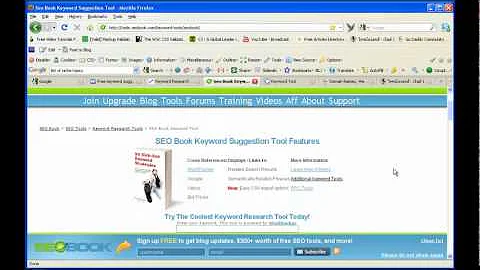Automate Product Title and Description Creation for Shopify
Table of Contents:
- Introduction
- Setting Up the Process
- Naming the File
- Generating the Product Title
- Formatting the Product Title
- Generating the Product Description
- Formatting the Product Description
- Creating the Shopify Product
- Testing and Optimizing the Output
- Conclusion
1. Introduction
In this article, we will explore a method to automate the creation of product titles and descriptions for Shopify using AI and Zapier. By following a step-by-step process, you can save time and effort in generating engaging content for your products. We will cover everything from setting up the process to testing and optimizing the output. So, let's dive in and simplify the task of creating compelling product content for your Shopify store.
2. Setting Up the Process
To begin, we need to set up the automation process using AI and Zapier. This involves creating a Zap that will trigger the generation of product titles and descriptions based on the image files you upload to a specific Google Drive folder. By integrating AI technology, we can leverage the power of natural language processing to generate creative and unique content for each product.
3. Naming the File
In this step, we will discuss the importance of naming your image files to provide essential information about the product. By including details such as color, design, and quality in the file name, we can utilize those variables later in the automation process. This step ensures that the AI model understands the context and generates accurate content for each product.
4. Generating the Product Title
With the file uploaded and named correctly, we can now generate the product title using AI. By feeding the image's title into the AI model, we can obtain a product title that is optimized for SEO and brand awareness. This step ensures that your product titles are engaging and descriptive, helping potential customers find your products easily.
5. Formatting the Product Title
After generating the product title, we may need to format it further for a cleaner presentation. Sometimes, the AI model adds quotation marks or other unnecessary characters. In this step, we will learn how to utilize a formatter block to remove any unwanted elements from the product title, providing a polished and professional look to your Shopify listings.
6. Generating the Product Description
Once we have the product title, we can move on to generating the product description. By inputting the product title into the AI model, we can obtain a comprehensive and engaging description for each product. This step ensures that your product descriptions are unique, informative, and appealing to potential customers.
7. Formatting the Product Description
Similar to formatting the product title, we may need to further structure and style the product description. By using formatting options like bullet lists and sentences, we can create visually appealing descriptions that highlight the key features and benefits of each product. This step enhances the readability and clarity of your product content.
8. Creating the Shopify Product
With the titles and descriptions generated, it's time to create the actual product in your Shopify store. We will guide you through the process of filling in the necessary variables, such as the title, description, product type, vendor, pricing, images, and more. This step ensures that your product listings are complete and ready to attract customers.
9. Testing and Optimizing the Output
Before finalizing the automation process, it's crucial to test the output and make any required optimizations. We will provide tips for effectively testing the generated titles and descriptions, as well as suggestions for improving SEO, brand awareness, and overall content quality. This step ensures that you have a streamlined and efficient workflow for generating product content.
10. Conclusion
In conclusion, automating the creation of product titles and descriptions for your Shopify store using AI and Zapier can save you significant time and effort. With a step-by-step process in place, you can generate optimized, unique, and engaging content for all your products. By leveraging AI technology, you can provide your customers with compelling and informative product listings that drive sales and enhance the user experience. So, get started with automating your product content creation and see the benefits for yourself.
Highlights:
- Automate the creation of product titles and descriptions for Shopify using AI and Zapier
- Save time and effort in generating engaging content for your products
- Set up an automation process that triggers content generation based on image files
- Optimize product titles for SEO and brand awareness
- Format and structure product descriptions for improved readability
- Create complete product listings in Shopify with ease
- Test and optimize the output to enhance content quality and effectiveness
- Improve user experience and drive sales with compelling and informative product content
FAQ:
Q: Can I use this automation process for all types of products?
A: Yes, you can use this process for any type of product. Simply ensure that you name your image files appropriately and provide relevant information for accurate content generation.
Q: Is it necessary to use specific AI models for this process?
A: We recommend using the gpt-4.0 model for comprehensive and content-oriented use cases. However, you can experiment with other models based on your specific requirements.
Q: Can I customize the formatting of the product descriptions?
A: Absolutely! You have the flexibility to format the product descriptions using bullet lists, sentences, and other formatting options to suit your preferences and make them visually appealing.
Q: How can I ensure the generated content is optimized for SEO?
A: By providing relevant keywords and concise product descriptions, you can optimize the generated content for SEO. Additionally, consider incorporating the business name and other context blocks to further enhance SEO.
Q: Will this automation process work for a large number of products?
A: Yes, this process is scalable and can be applied to a large number of products. Just ensure your Google Drive folder structure and naming conventions are consistent for smoother automation execution.






















